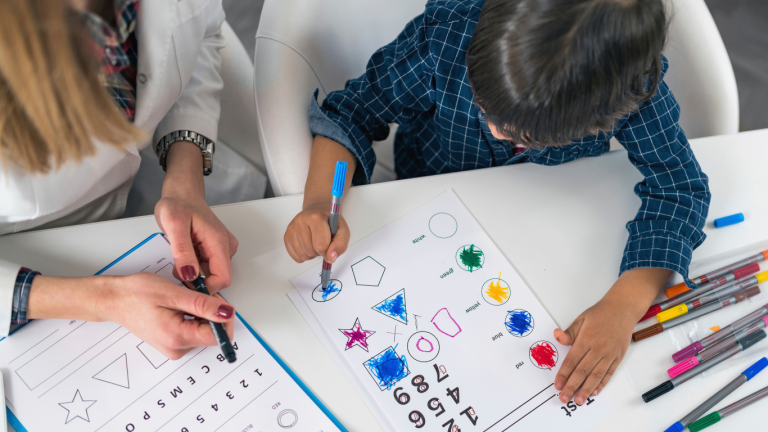What Are Learning Disabilities?
Learning disabilities are a group of neurological conditions that affect the way individuals process, understand, or use information. These challenges are not related to intelligence but rather to how the brain processes certain types of information. Understanding learning disabilities is essential to providing the right support for children and adults alike. In this blog, we explore the various types of learning disabilities, their impact, and the importance of early identification and intervention.
Common Types of Learning Disabilities
Learning disabilities come in various forms, each affecting specific skills or areas of learning. Some of the most common types include:
- Dyslexia: This language-based learning disability affects reading, spelling, and writing. People with dyslexia often struggle with recognizing words, decoding, and understanding written text.
- Dyscalculia: Characterized by difficulties with math, this learning disability impacts number sense, memorizing math facts, and performing calculations.
- Dysgraphia: This condition affects writing skills, including handwriting, spelling, and the organization of thoughts on paper.
- Auditory Processing Disorder (APD): Individuals with APD have trouble understanding and processing auditory information, which can impact their ability to follow instructions or understand spoken language.
- Nonverbal Learning Disabilities (NVLD): These disabilities affect spatial and organizational skills, often making it challenging for individuals to interpret visual information or understand nonverbal cues.
- Attention-Deficit/Hyperactivity Disorder (ADHD): While not strictly a learning disability, ADHD frequently coexists with learning disabilities and can impact focus, organization, and task completion.
Signs and Symptoms of Learning Disabilities
Identifying learning disabilities early can make a significant difference in a person’s academic and social development. Common signs to watch for include:
- Difficulty reading, writing, or solving math problems.
- Trouble following directions or understanding instructions.
- Poor memory or difficulty retaining information.
- Problems with time management and organization.
- Avoidance of tasks that require reading or writing.
- Struggles with social interactions or understanding nonverbal communication.
Causes of Learning Disabilities
Learning disabilities are believed to arise from a combination of genetic, neurological, and environmental factors. Possible causes include:
- Genetics: A family history of learning disabilities can increase the likelihood of a child developing similar challenges.
- Brain Development: Differences in brain structure or function may contribute to specific learning disabilities.
- Prenatal and Birth Factors: Premature birth, low birth weight, or exposure to toxins during pregnancy can increase the risk.
- Environmental Influences: Early childhood exposure to toxins, poor nutrition, or limited access to educational resources can also play a role.
Importance of Early Diagnosis
Detecting learning disabilities early allows parents, teachers, and professionals to implement effective interventions and support strategies. Early diagnosis can:
- Provide tailored educational plans, such as Individualized Education Programs (IEPs) or 504 Plans.
- Prevent academic and emotional struggles by addressing challenges proactively.
- Boost a child’s self-esteem by providing tools to succeed.
Strategies for Supporting Individuals with Learning Disabilities
With the right support, individuals with learning disabilities can thrive academically and socially. Effective strategies include:
- Educational Interventions: Specialized instruction tailored to the individual’s needs can improve skills in specific areas.
- Assistive Technology: Tools like speech-to-text software, audiobooks, and graphic organizers can aid learning.
- Therapies: Speech therapy, occupational therapy, and behavioral therapy can address specific challenges.
- Parent and Teacher Collaboration: Open communication between parents and educators ensures consistent support across home and school environments.
Learning disabilities are lifelong challenges, but with proper identification and support, individuals can overcome obstacles and achieve their potential. Understanding the unique strengths and needs of those with learning disabilities fosters a more inclusive and supportive environment. Whether you’re a parent, teacher, or individual seeking guidance, knowledge is the first step toward empowerment and success.



